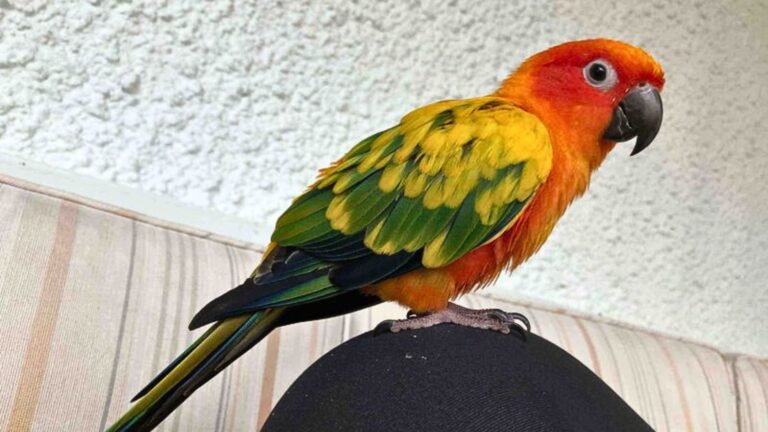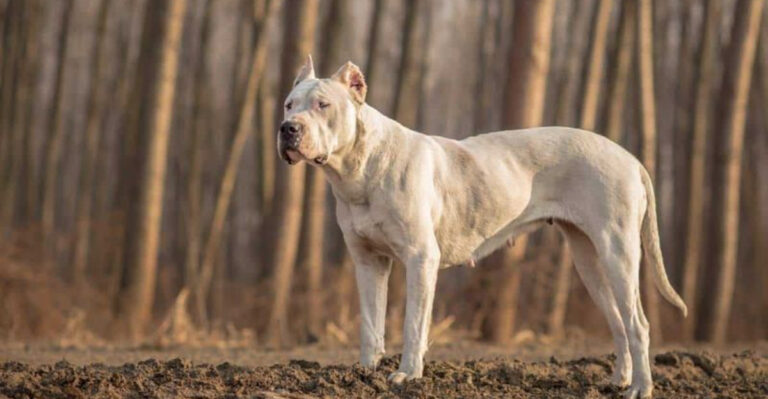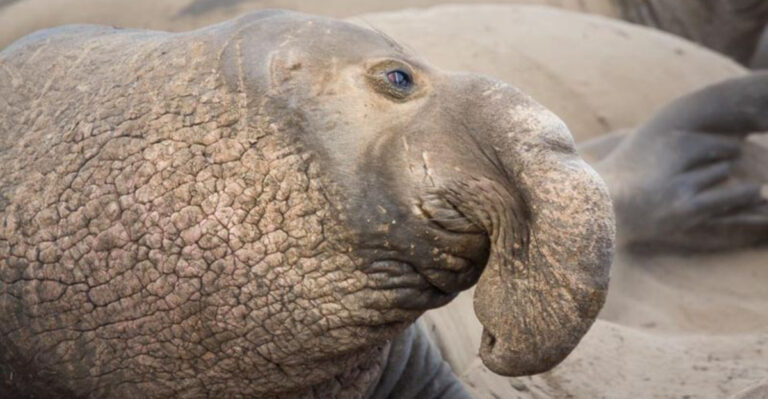Discover 15 Types Of Butterflies

Butterflies are some of nature’s most dazzling creatures, bringing vibrant colors to gardens and wild spaces alike.
These delicate insects undergo an amazing transformation from caterpillar to winged beauty through the process of metamorphosis. Let’s explore fifteen fascinating butterfly species that showcase the incredible diversity of these enchanting pollinators.
1. Monarch Butterfly
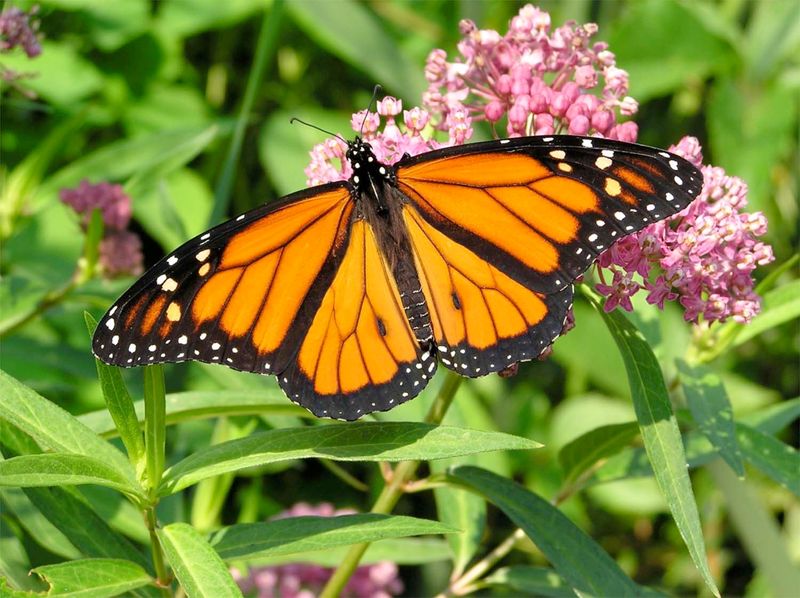
Famous for their epic 3,000-mile migration, these orange and black beauties are nature’s marathon champions. Each autumn, millions flutter southward to Mexico, navigating by the sun’s position and Earth’s magnetic field.
Their wings contain bitter-tasting compounds absorbed from milkweed plants during the caterpillar stage, making them unappetizing to predators. This clever defense mechanism helps these royal insects survive their incredible journey.
2. Blue Morpho

Electric blue wings flash like neon signs as these tropical treasures float through rainforest canopies. The iridescent color isn’t from pigment but microscopic scales that reflect light—a phenomenon called structural coloration.
Close the wings and they transform completely, revealing camouflage brown undersides with eyespots to confuse predators. Native to Central and South America, their wingspan stretches an impressive 5-8 inches across.
3. Painted Lady
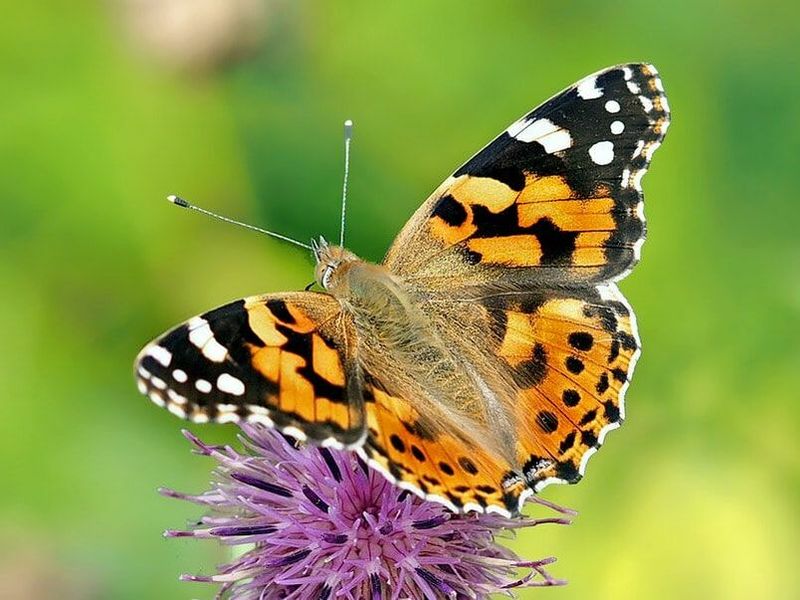
Globe-trotting adventurers with a taste for thistle, these orange-brown butterflies appear on every continent except Antarctica and Australia. Their migrations span longer distances than even Monarchs, though they travel in stages across generations.
Adaptable and resilient, they thrive in diverse habitats from deserts to mountains. The intricate pattern of black, white, and orange on their wings resembles an artist’s careful brushstrokes, earning their poetic name.
4. Swallowtail Butterfly
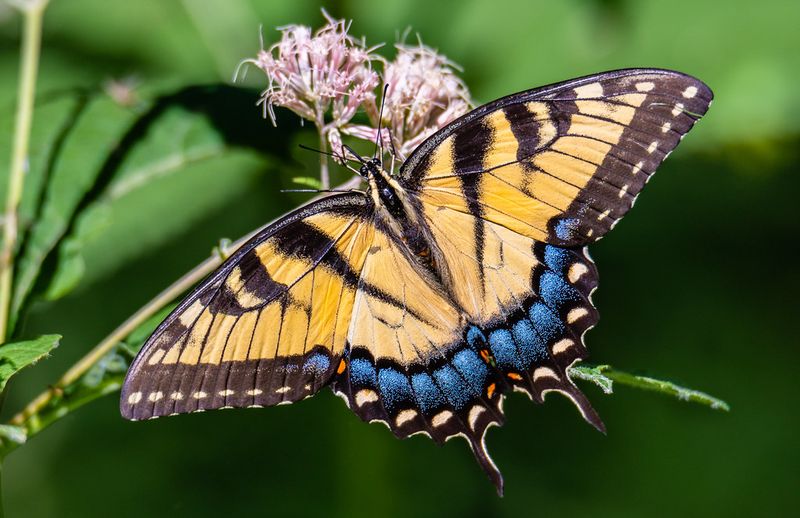
Graceful tails extend from their hindwings like the formal attire of Victorian gentlemen. These elegant flyers come in various species, with the black swallowtail and tiger swallowtail being among the most recognized in North America.
Young caterpillars cleverly disguise themselves as bird droppings before maturing into striking green forms with false eyespots. When threatened, they extend a special organ called an osmeterium that releases a foul smell to deter predators.
5. Glasswing Butterfly
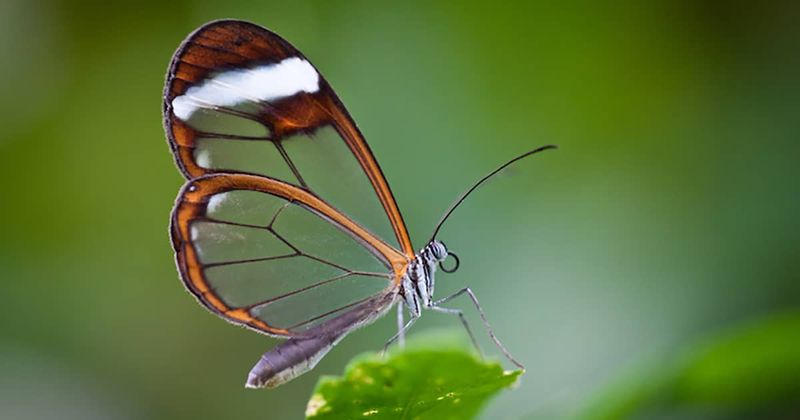
Nature’s window panes flutter through Central American rainforests with transparent wings that seem almost magical. The absence of colored scales allows you to literally read text through their wings! Despite their delicate appearance, these see-through wonders are surprisingly sturdy.
Their transparency serves as perfect camouflage against predators. The wing borders remain opaque with a reddish-brown frame, creating a stunning contrast to the clear center.
6. Question Mark Butterfly
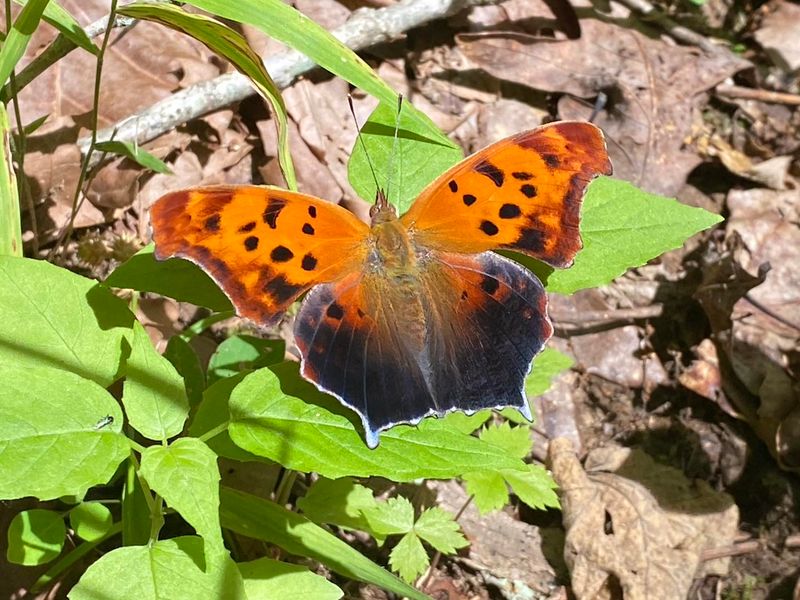
Punctuation takes flight with this woodland butterfly named for the small white mark on its underwing that resembles a question mark.
Orange-brown wings with black spots create a striking appearance when open. Masters of disguise, they mimic dead leaves when wings are closed, blending perfectly into forest floors. These clever insects often play dead when threatened, falling to the ground and remaining motionless until danger passes.
7. Purple Emperor
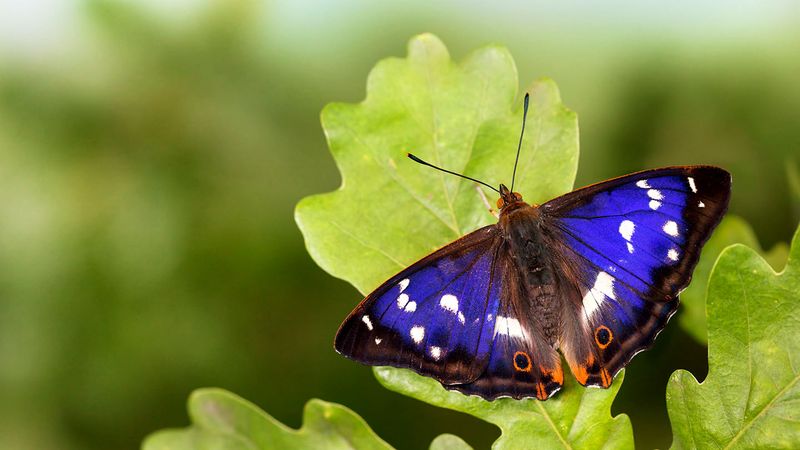
Royal purple shimmers across the wings of male emperors, visible only at certain angles as they soar through European woodland canopies. Females lack this iridescence, sporting a more subtle brown pattern with white markings.
Surprisingly, these majestic insects ignore flowers, preferring tree sap, rotting fruit, and even less appetizing meals like animal droppings and carrion. Butterfly enthusiasts have successfully lured them using everything from smelly cheese to sweaty socks!
8. Zebra Longwing
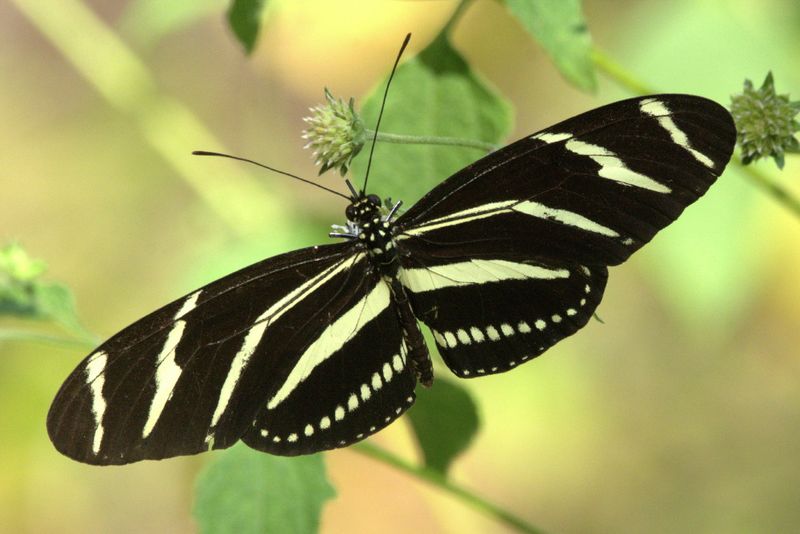
Black and white stripes race across elongated wings, creating a pattern as distinctive as their namesake mammal. Unlike most butterflies that live mere weeks, these remarkable insects can survive up to six months thanks to their unusual diet. Breaking butterfly norms, they supplement nectar with protein-rich pollen, grinding it with specialized mouthparts. They’re also social butterflies in the literal sense—roosting together in groups at night and returning to the same spots daily.
9. Peacock Butterfly
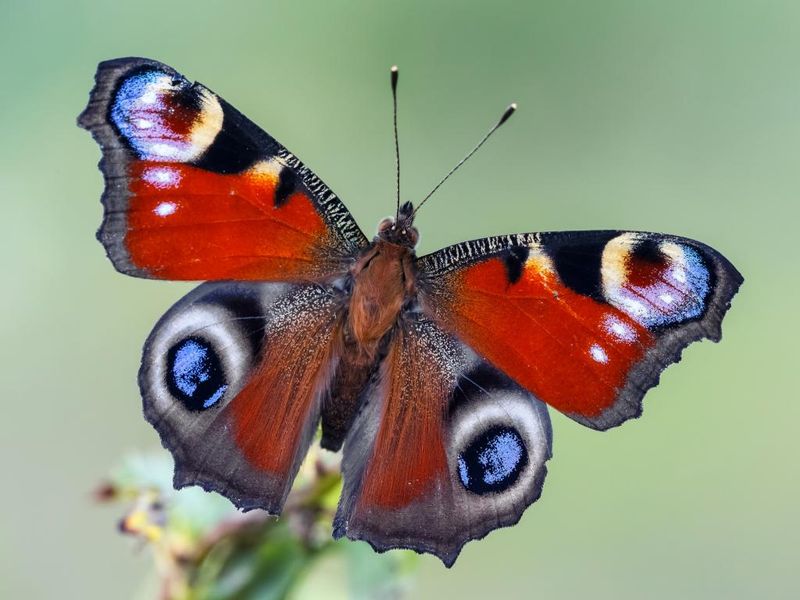
Eyespots stare back at predators from these European beauties, mimicking the gaze of much larger animals. When threatened, they flash their wings and make hissing sounds by rubbing them together—a startling defense mechanism.
Deep reddish-brown wings feature vibrant blue, yellow, and red eye patterns that resemble the tail feathers of their bird namesake. These hardy insects hibernate through winter months, tucking themselves into tree hollows, garden sheds, or other sheltered spots.
10. Ulysses Butterfly

Electric blue wings flash like sapphires against the Australian rainforest backdrop, visible from remarkable distances. Black borders frame the brilliant blue, creating a stunning contrast that seems almost too vibrant to be natural.
Males are fiercely territorial, chasing away rivals from their chosen patches of sunlight. These dazzling insects have become symbols of Queensland tourism, appearing on postcards and promotional materials. Their caterpillars feed exclusively on native rainforest trees.
11. Brimstone Butterfly
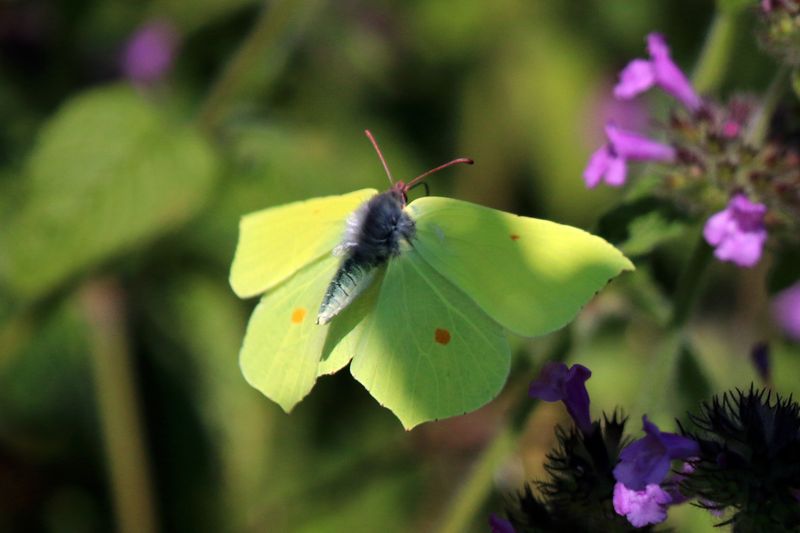
Sulfur-yellow wings announce spring’s arrival across Europe, often the first butterfly to emerge after winter. Their leaf-shaped silhouette provides perfect camouflage when resting among foliage, with males sporting bright yellow wings while females appear more greenish-white.
Ancient alchemists named them after the element brimstone (sulfur) due to their distinctive coloration. These hardy insects can live nearly a year—exceptional longevity in the butterfly world—and hibernate through winter in ivy or holly.
12. Dead Leaf Butterfly
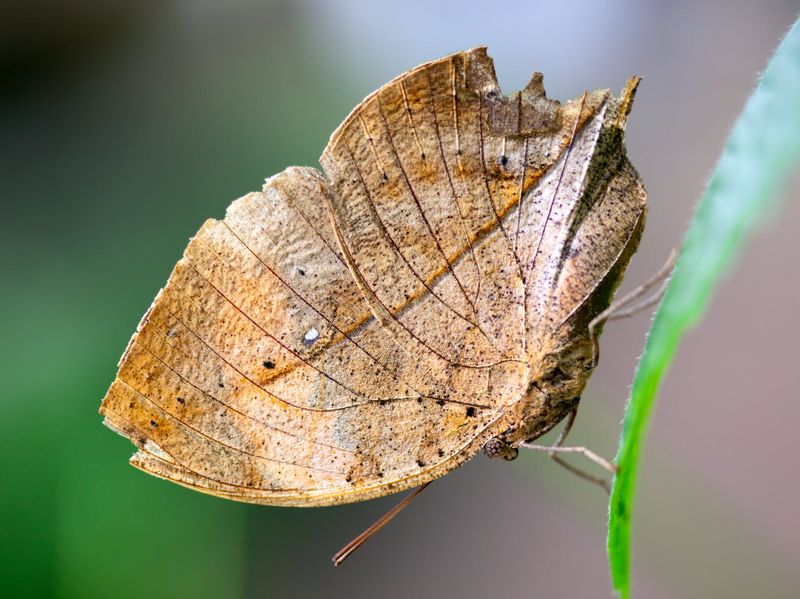
Award-winning actors of the insect world, these masters of disguise perfectly mimic dried leaves when their wings close. Complete with fake midribs, veins, and even what appear to be fungus spots and nibble marks from imaginary insects! Open those wings, though, and brilliant blues and purples burst forth in stark contrast to their camouflaged undersides. Native to tropical Asia, they rest upside down from twigs, enhancing their leaf impression by gently rocking as if stirred by breeze.
13. Common Buckeye

Mesmerizing eyespots stare out from tan wings, creating one of North America’s most distinctive butterfly designs. These false eyes serve as decoys, tricking birds into attacking less vital wing edges rather than the butterfly’s body.
Fast, erratic flyers, they dart from flower to flower in open areas. Males establish territories on bare ground, chasing away intruders with impressive aerial displays. Their caterpillars feed on plants containing iridoid glycosides, chemicals that make adult butterflies unpalatable to predators.
14. Apollo Butterfly
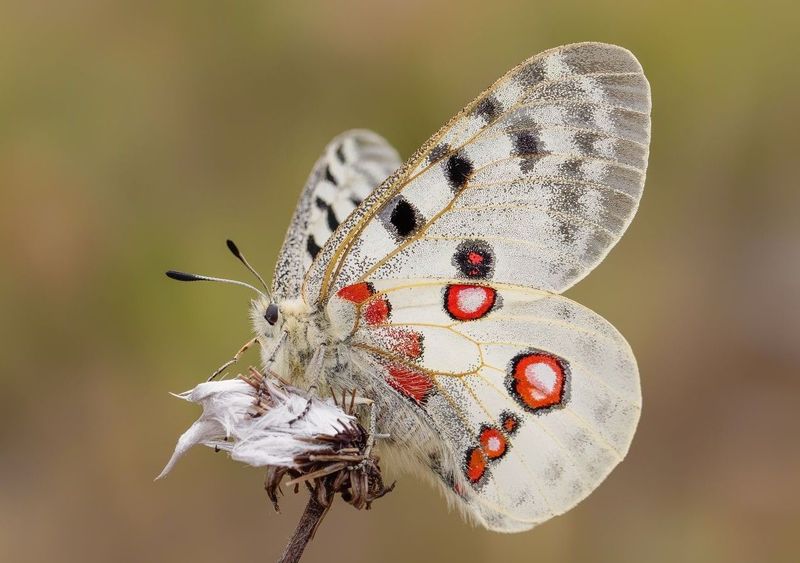
Alpine meadows come alive with these endangered white beauties adorned with striking red eyespots. Named after the Greek god of light, they glide through European mountain landscapes at elevations up to 7,500 feet.
Females carry a distinctive pouch after mating—a biological chastity belt created by males to prevent further mating. Protected throughout Europe, their populations have declined due to climate change and habitat loss. Their caterpillars feed exclusively on sedum plants growing on sunny rocky slopes.
15. Postman Butterfly
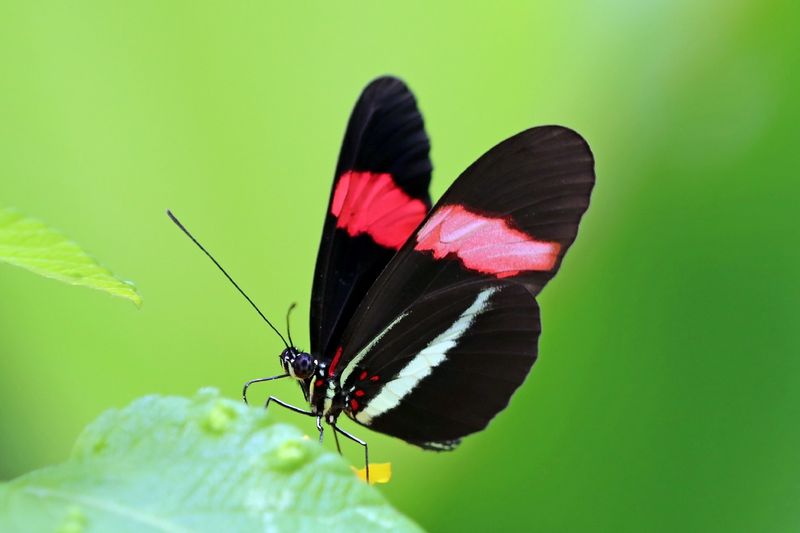
Delivering splashes of crimson against black wings, these tropical messengers follow the same route daily like their namesake postal workers. Native to Central and South America, they’re a common sight in butterfly houses worldwide.
Unusually for butterflies, they can remember and learn—studies show they can be trained to associate colors with food rewards. They form communal roosts at night, returning to the same branches. Their caterpillars feed on passion flower vines, absorbing toxins that make adults unpalatable to predators.

